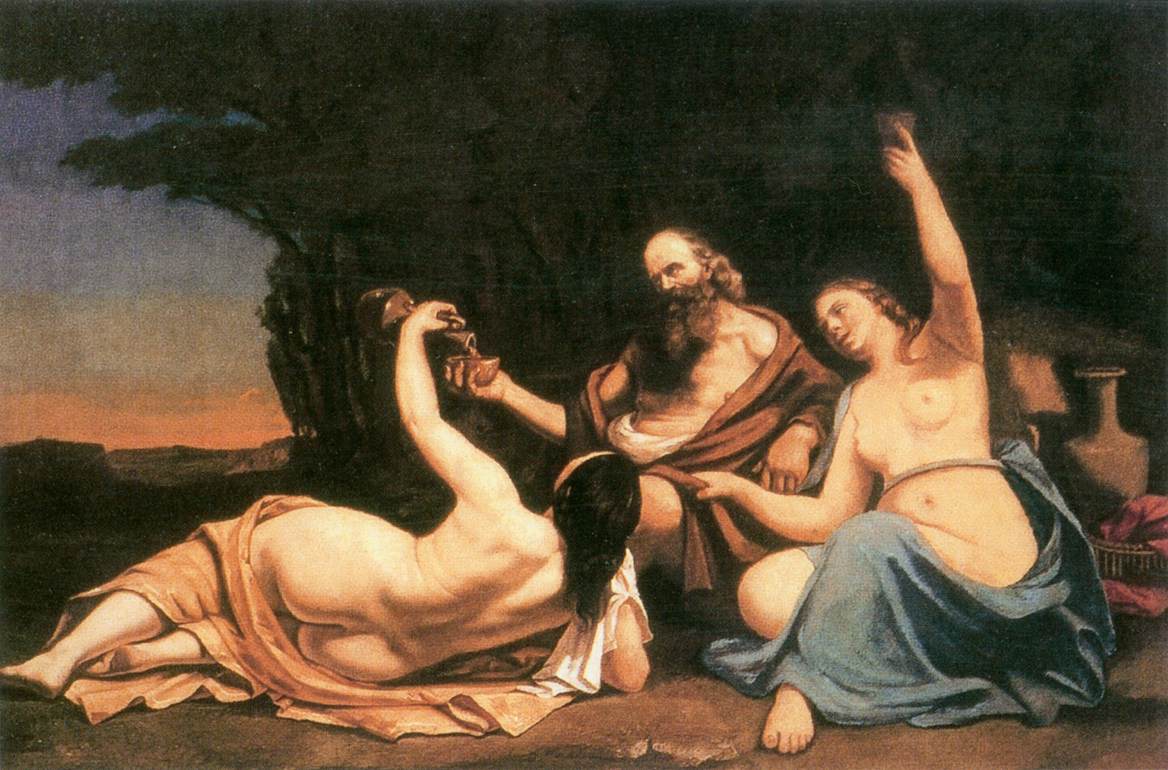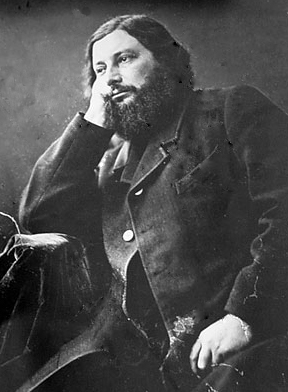迷失畫廊
逛畫廊,看世界, 記下自己的心得
1844
Oil on canvas, 89 x 116 cm
Private collection
Shortly after his arrival in Paris, Courbet made a very important acquaintance, that of the genre-painter Fran�ois Bonvin. From him he learnt the sacrosanct ritual of copying old masters in the Mus�e du Luxembourg and the Louvre. Following in the footsteps of G�ricault, Chass�riau and Delacroix, Courbet discovered the Venetian and Bolognese schools of Italian Renaissance painting, the northern Baroque of the seventeenth and eighteenth centuries and the works of Vel�zquez, Zurbar�n and Murillo. The principal surviving records of this period are his copies of Guercino's Vision of St Jerome (1840) and Lot and his Daughters . Courbet destroyed most of his other early works, sparing only some portraits and his first big history paintings, in which he was clearly struggling with the heritage of Romanticism.
Biography

Jean Désiré Gustave Courbet (10 June 1819–31 December 1877) was a French painter who led the Realist movement in 19th-century French painting. The Realist movement bridged the Romantic movement (characterized by the paintings of Théodore Géricault and Eugène Delacroix), with the Barbizon School and the Impressionists. Courbet occupies an important place in 19th century French painting as an innovator and as an artist willing to make bold social commentary in his work.
| “ | I am fifty years old and I have always lived in freedom; let me end my life free; when I am dead let this be said of me: 'He belonged to no school, to no church, to no institution, to no academy, least of all to any régime except the régime of liberty. | ” |
French painter, born at Ornans, near the Swiss border of France. He was in Paris by 1839, working under a minor painter, in the so-called Ateliers Libres and in the Louvre, copying Dutch, Flemish, Venetian and Spanish pictures, as well as works by Delacroix and Géricault. Much later - characteristically - he claimed to have been self-taught. He exhibited at the Salon regularly only after the State bought his After Dinner at Ornans (1849, Lille), when the award of a medal exempted him from the jury system, until the privilege was abolished in 1857. He often exhibited in the provinces, which were generally less acidly critical than Paris, and he made many trips to Belgium, Holland and Germany between 1846 and 1868, exhibiting there with more success than in France.
He evolved a vigorous naturalism, tinged with the influence of Caravaggio and the Venetians, and painted scenes of everyday life, portraits (particularly self-portraits), nudes, still-life, sea- and landscapes, and flowers. The landscapes are often of mountain scenery round Ornans, and include hunting scenes or deer in the snow. His scenes from everyday life range from the depiction of abject poverty (as in the Stonebreakers), social comment (the Young Women of the Village or the Young Women by the Seine) to the representation of a peasant funeral with more than fifty life-size figures in the Burial at Ornans. He also painted a quasi-philosophical manifesto in the huge Painter in his Studio.
In 1853, Alfred Bruyas, a rich collector, bought the Bathers and the Spinner and sat for his portrait. Their unlikely friendship endured until Courbet's death, and Bruyas was his most devoted patron, host and admirer, portrayed in the Bonjour, Monsieur Courbet of 1854. All the Bruyas pictures are now in Montpellier, Musée Fabre. In 1855 and 1867, on the occasion of International Exhibitions in Paris, he held large private exhibitions of his works in an attempt to offset official neglect. Both attracted more adverse than helpful comment, but they established the precedent of private exhibitions, later followed by Manet and the Impressionists.
Courbet was intransigent in his political attitudes, articulately Republican and anti-Imperialist, a friend of the socialist philosopher Prudhon, and rabidly anticlerical. His Return from the Conference (1862), depicting drunken priests, was rejected both by the official Salon and the Salon des Refusés, earned him general abuse, and was bought by a strict Catholic who destroyed it.
After the restoration of Republican government, following the disasters of the Franco-Prussian War, he proposed the demolition of the Vendome Column, which celebrated the victories of the first Napoleon, although he does not appear to have had a hand in the actual demolition in April 1871. At the overthrow of the Commune he was arrested and sentenced to 6 months' imprisonment for his part in the destruction of the column; but in 1873 he was re-tried and condemned to pay for its restoration, estimated at over Fr.323,000. Faced with total ruin, he fled to Switzerland. He set up a picture factory, employing hacks in what was virtually a production-line for Swiss landscapes, which have damaged his reputation.
His technique was imperfect; reworkings and bitumen have played havoc with many works, and his brushwork and use of the trowel-shaped palette knife are often as insensitive as his colour, although in his best works this can be extraordinarily rich, his chiaroscuro and his vivid, unconventional approach dramatically exciting. Many of his nudes range from the mildly to the highly erotic, but his painting of bare flesh is always superb. He had a certain influence on Whistler, although the American indignantly repudiated this. He was of inordinate vanity, with an unendearingly caustic tongue, and led a flamboyantly Bohemian life; eventually he developed dropsy and died in exile on the last day of 1877.




